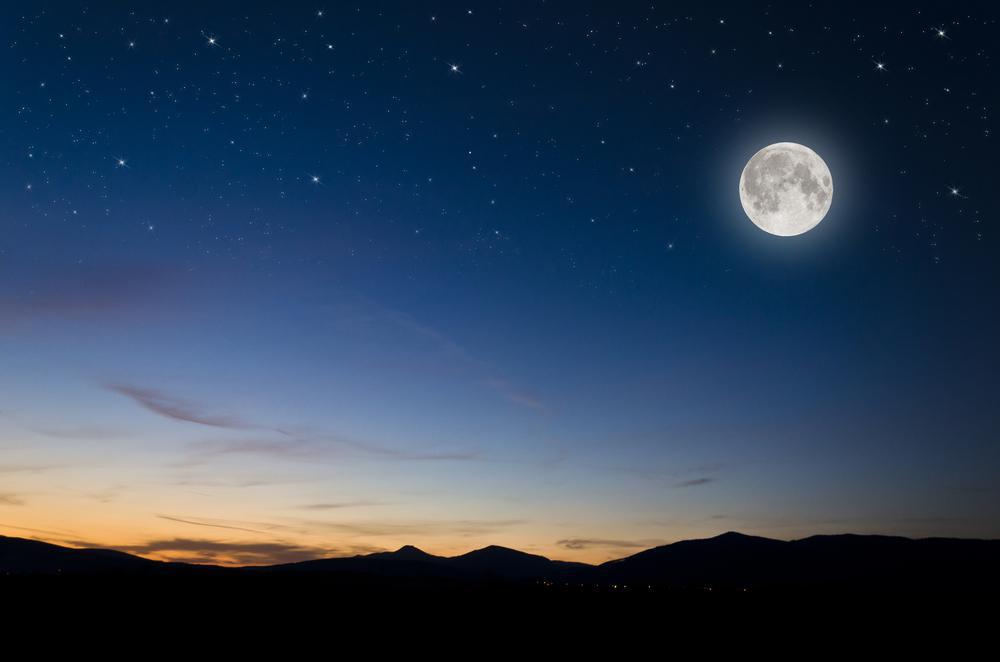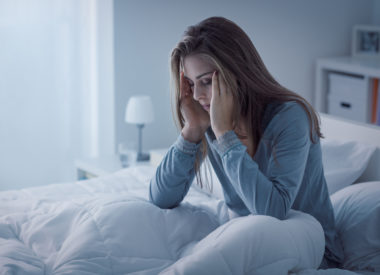The Darkest Night Of The Year, According To Our Circadian Rhythms
Today and tonight mark the Winter Solstice, the shortest day and longest night of the year.
Of course, the significance of this date has everything to do with our reliance on the light-dark cycles of the planet to keep our circadian rhythms aligned with the Earth’s revolution around the sun.
How the winter solstice can affect sleep
The darkest day and night of the year comes at a time when many of us are struggling to survive the season.
Either we are experiencing the sluggish, low-energy symptoms of seasonal affective disorder (or SAD, sometimes called winter depression ), or we are physically struggling with the seasons many viruses, as well as the emotional and physical stress that can be a byproduct of the holidays.
If you feel like you are at your most sedentary at this time of year, you wouldn’t be imagining things. Low light caused by the planetary turn away from the sun for northern latitudes can have an impact on the function of our eyes, as well as our moods and our ability to achieve good sleep at the proper time.
Light exposure is the chief way our bodies respond to the light-dark cycles of the Earth, even when they swing to extremes like the solstices.
When it is darker longer, we tend to want to hibernate, whereas at the height of summer (at least in the Northern Hemisphere), when the light lasts the longest, it seems like we could stay up for hours and not feel sleep deprived.
Our eyes perceive light and send these signals to the main timekeeper in our brain, the suprachiasmatic nucleus (SCN).
While the entire body is regulated by many different body clocks (including each and every cell), the SCN is the master of all the others.
From the SCN, signals are sent to key parts of the body which rely on timing to do their work, such as the digestive system during sleep. Included among these signals are shifts in the release of key hormones which spawn the process of sleep: melatonin is the prime example here.
Melatonin is a naturally occurring hormone in your body which is critical to maintaining healthy circadian rhythms, which are defined as the 24-hour cycle of physical and behavioral processes that guide the natural biological patterns of all living things.
When we lose these patterns or they fall out of balance, we become vulnerable to all sorts of risks: of illness, accident, mistakes, injuries, even weight gain caused by circadian disruption.
When natural light dims, we turn the lights on, and this is how we manage to stay awake and alert until we voluntarily go to bed later in the evening.
Before the advent of electric lighting, however, life after sundown was lived by candlelight and fireplaces, so its not hard to imagine how human beings probably went to bed a whole lot earlier during the period right before and following the darkest night of the year.
What a difference the Earth makes
According to Time and Date , Winter Solstice started at 2:44am today in Seattle.
This is an astronomical event and not the actual sunrise. Todays sunrise was at 7:55am; the day itself will last just shy of 8.5 hours, with the sun setting at 4:21pm.
It’s hard to imagine such a huge time difference between solstices, but today will be over 7.5 hours shorter than our previous June solstice.
For comparison, an equinox (the midpoint between solstices) brings days that average around 12 hours in length. So, even just 3 months ago, we were enjoying over 3 more hours of sunlight than we are now.
No wonder were all sleepy and in need of a caffeine pick-me-up in the land of Starbucks!
Solutions to the solstice slump
We don’t live in pre-Edison times, however, and that means our lives persist even when the sun is not out to charge us up. Here are a couple of ways to get your body and mood through these dark days and nights.
Light therapy: As we’ve discussed previously in this blog, using bright light in a thoughtful way according to a smart timed schedule can dash away those winter blues and give you a healthy natural dose of vitamin D.
Seattle does not have the climate or light at this time of year to ensure ample supplies of this vitamin, and we need light in order for our bodies to manufacture it naturally.
Vitamin D supplements: While these don’t necessarily make you sleep better, they can help with deficiencies that can cause daytime sleepiness(which can result in naps, which could then make it harder to fall asleep at your normal bedtime later). Adequate vitamin D also bolsters the immune system at a time of year when you need it most. After all, who sleeps well when they have the flu?
Melatonin supplements: Though taking melatonin is somewhat controversial (there isn’t a lot of solid research to support proper dosage, effectiveness, or safety for certain populations, like children), it has been used by some with success. Opt for the lowest dose you can find, and take it an hour before bedtime, for best results.
Good sleep hygiene: Following best practices at bedtime is an easy way to keep your rhythms aligned. Four best practices include:
-
Going to bed at the same time every night, and waking up at the same time every morning. Our bodies like habits such as these, and tend to perform better when we are consistent with our sleep.
-
Getting exposure to natural light, outside, first thing in the morning. A nice dose of natural light can stave off grogginess throughout the day; even on a dim morning, the natural light of the sun is still brighter than normal household lighting.
The SCN will process this light immediately, cut back on melatonin release, and set forth a chain of hormonal events which will encourage wakefulness throughout the day.
Bright light also improves serotonin circulation; serotonin, a natural mood enhancer, can otherwise fall during these dark days and lead to mood dysregulation.
-
Exercising, first thing in the morning. This practice keeps your circadian rhythm stubbornly established, and creates a stronger sleep drive at the end of the day.
-
Limiting your exposure to backlit electronic devices at least one hour before bedtime. That blue spectrum light coming off your smartphone, laptop, or electronic tablet is going to send your SCN false readings about light, forcing it to stop releasing the natural melatonin your body uses to gradually move toward sleepiness and bedtime.
If you cant put your gadgets away, at least think about wearing blue light-blocking glasses, placing filters on your devices to block blue light emissions, or turn on your Night Shift or other built-in utilities in your handheld devices to do the filtering for you.
The darkest shortest day is not all bad
Finally, it’s worth pointing out that the winter solstice is considered a time of celebration for many cultures.
Winter solstice parties include the lighting of candles or bonfires at gatherings of loved ones.
In some parts of the world, it is a time to embrace the darkness in quiet contemplation (in Denmark, they call this celebration hygge) in order to fend off cabin fever.
In any case, having a cozy midwinter nights sleep is, or should be, part of the way we acknowledge the substantial influence the sun and Earth have over our rhythms.
You might consider not turning the lights on at sunset tonight, and using only candles and a fireplace to guide your ordinary evening pursuits. You might find it becomes a lot easier to fall asleep!
However you approach it, the solstice may be the longest night, but the up side of this is that every day will get longer from here forward, and that alone may be enough reason to celebrate!



